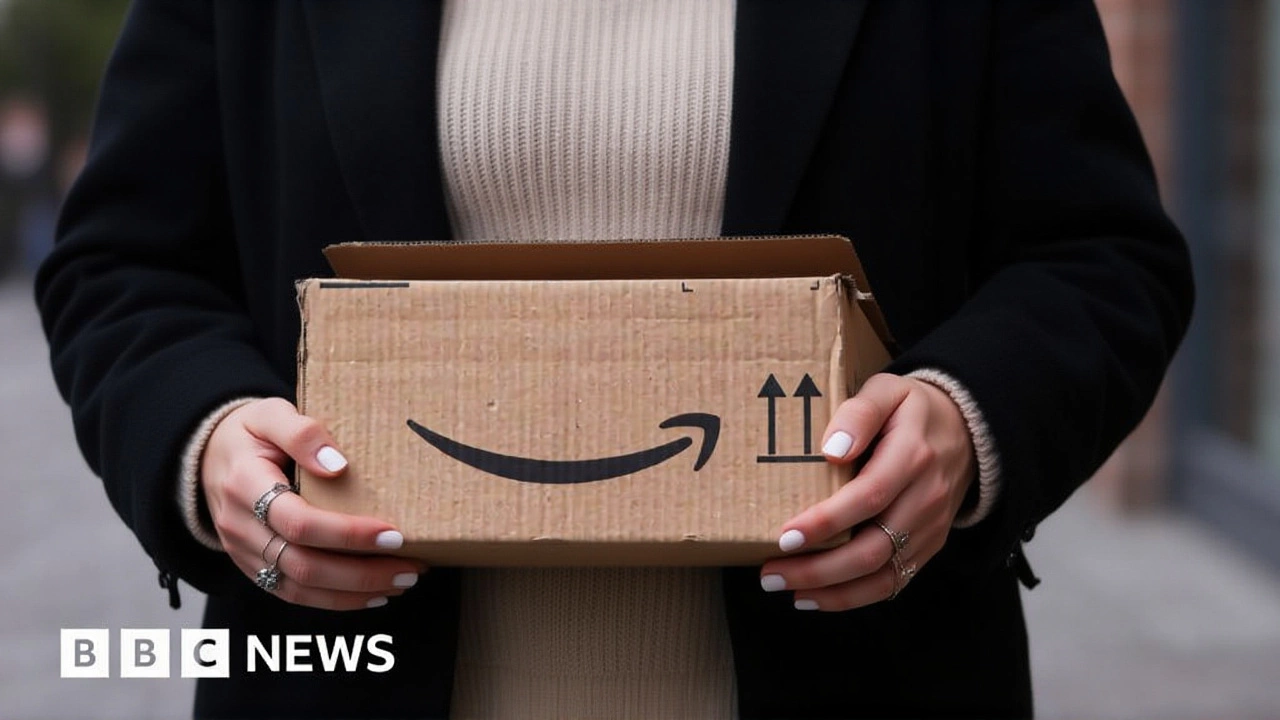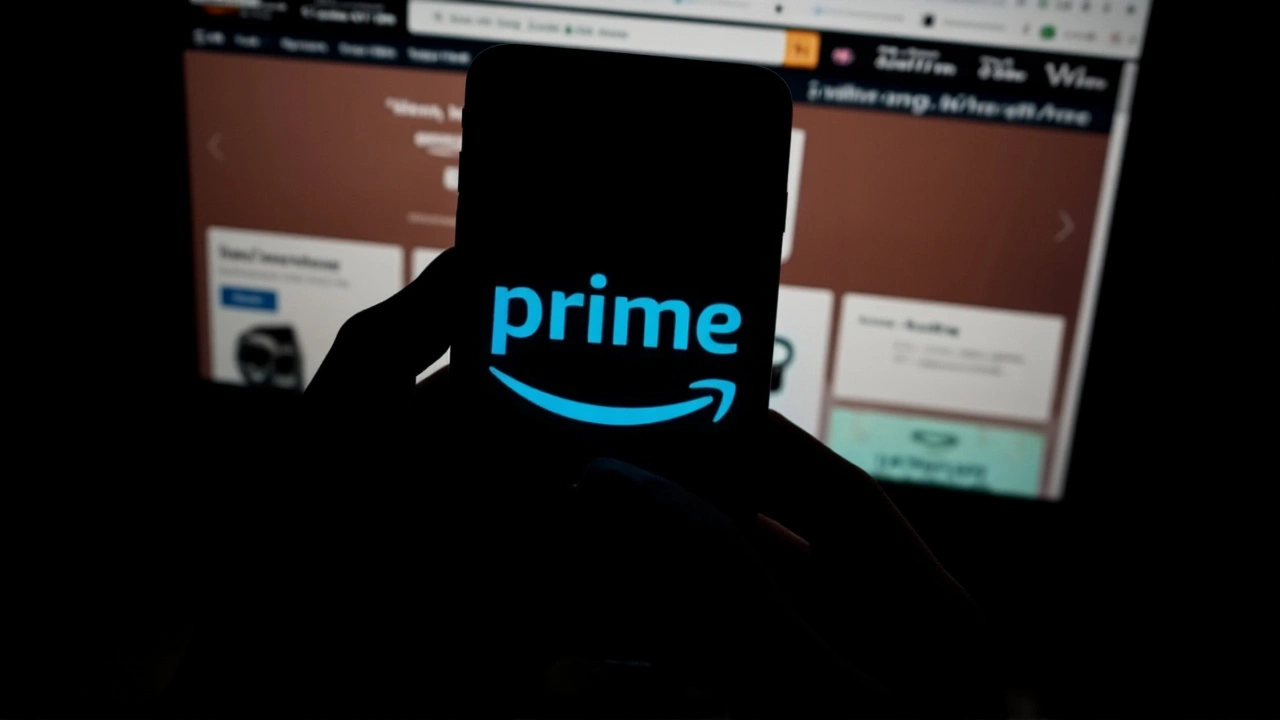FTC Secures $2.5 B Historic Settlement With Amazon Over Prime Traps
 Oct, 20 2025
Oct, 20 2025
When Andrew N. Ferguson, Chairman of Federal Trade Commission announced a $2.5 billion deal on September 12, 2025, the news hit the tech world like a surprise thunderclap. The agreement targets Amazon.com, Inc. and two of its senior officials – Neil Lindsay, Senior Vice President, and Jamil Ghani, Vice President – for allegedly “trapping” millions of shoppers into Prime subscriptions they never meant to sign up for.
What sparked the FTC’s deep‑dive into Amazon’s Prime sign‑ups?
Back in early 2023, the FTC’s Enforcement Division opened a formal investigation after a flood of complaints – more than 50,000 filings between 2019 and 2024 – suggested that Amazon’s checkout flow was nudging unsuspecting customers into a $139‑a‑year Prime plan. A bipartisan congressional hearing led by Senator Richard Blumenthal and Representative Jan Schakowsky pressed the agency to act, citing “deceptive recurring billing practices” across several tech platforms.
The FTC’s complaint, filed in the U.S. District Court for the Western District of Washington, painted a picture of pre‑checked boxes, hidden cancel buttons buried under three‑click menus, and bold “Start Your Free Trial” banners that turned one‑time shoppers into annual Prime members without a clear opt‑in. Internal memos recovered by investigators even featured language like “subscription driving is a bit of a shady world” and “leading consumers to unwanted subscriptions is an unspoken cancer,” indicating that the misconduct was known inside the company.
Breakdown of the $2.5 B settlement
Here’s the thing: the deal splits the sum into two parts. Amazon will pay $1 billion as a civil penalty straight to the U.S. Treasury, and another $1.5 billion will go straight back to consumers who were caught in the trap. The restitution fund is projected to benefit roughly 29.4 million eligible shoppers, which works out to about $51 per person – a figure confirmed by the Courier‑Journal on October 19, 2025.
- Penalty to Treasury: $1,000,000,000
- Consumer refunds: $1,500,000,000
- Eligibility window: June 23 2019 – June 23 2025
- Refund claim window opens: November 15 2025 (online at ftc.gov/amazonrefund)
- Final payments due: within 180 days of claim validation
Beyond the money, the court order forces Amazon to revamp its enrollment and cancellation interfaces by December 31 2025. The new design must include a single‑click cancellation button, crystal‑clear pricing disclosures, and an explicit opt‑in checkbox that can’t be pre‑selected.
Reactions from the front lines
Consumer‑rights groups have cheered the outcome. The Consumer Federation of America, based in Washington, D.C., called the settlement “a watershed moment for subscription‑trap enforcement.” Likewise, the Electronic Privacy Information Center, led by Executive Director Alan Butler, praised the “rigorous monitoring” clause that will keep an eye on Amazon for the next two decades.
Amazon’s response was measured. Spokesperson Maria Renz said on September 25, 2025, “We are pleased to resolve this matter and remain committed to providing transparent subscription experiences for customers,” while carefully noting that the company “admitted no wrongdoing.”
Financial analysts, however, see the penalty as a slap on the wrist. Doug Anmuth, senior analyst at J.P. Morgan Chase & Co., noted in a September 28 report that $2.5 billion represents roughly 0.39 % of Amazon’s 2024 revenue of $637.5 billion – “financially immaterial but reputationally significant,” he wrote.

What this means for Amazon’s bottom line and its Prime Empire
Turns out the real cost may be less about cash and more about brand trust. Prime members, who now number about 200 million worldwide, expect a frictionless experience. If the new cancellation flow feels too “hard‑sell,” some analysts fear churn could rise. On the flip side, a transparent sign‑up process could win back skeptics who have long avoided Prime because of the perceived “auto‑enroll” trap.
Amazon’s CEO, Andrew R. Jassy, has not publicly commented on the settlement yet, but insiders say the leadership team is already working with the FTC’s compliance monitor to redesign the checkout flow. The changes will be rolled out on the main Seattle site first, with a global rollout slated for early 2026.
Looking ahead: enforcement and the future of subscription regulation
The twist is that this isn’t a one‑off. The court order obliges Amazon to submit quarterly compliance reports for the next 20 years, and the FTC retains the right to launch additional investigations if the company slips. Industry watchers expect the FTC to lean on the Restore Online Shoppers’ Confidence Act (ROSCA) more aggressively, especially as other giants – think streaming services and app stores – face similar scrutiny.
For consumers, the key takeaway is simple: if you signed up for Prime after June 2019 and never remembered doing so, you may be eligible for a refund. The claims portal opens in mid‑November, and the FTC says the process will be “as straightforward as possible.”
Frequently Asked Questions
How can I find out if I’m eligible for a Prime refund?
Eligibility hinges on having an active Prime subscription that started between June 23 2019 and June 23 2025 without a clear opt‑in. Visit the FTC’s dedicated portal at ftc.gov/amazonrefund after November 15, 2025, enter the email linked to your Amazon account, and the system will flag any qualifying charges.
Will Amazon’s new cancellation process affect existing Prime members?
The redesign applies to all accounts, new and old. Current members will see a clearer “Cancel Membership” button on their account page starting January 2026, and they’ll be able to opt‑out with a single click – no more navigating through multiple menus.
What does the settlement mean for other online retailers?
Legal experts say the FTC’s action sets a powerful precedent. Any company that uses pre‑checked boxes or hides cancellation options now faces a higher risk of ROSCA lawsuits. Expect a wave of compliance audits across e‑commerce platforms over the next year.
How large is the $2.5 billion settlement compared to past FTC actions?
At $2.5 billion, this is the biggest monetary judgment in the FTC’s 100‑year history. The previous record was the $700 million Facebook privacy settlement in 2019. The gap underscores how seriously the agency is treating subscription‑trap schemes.
Will the FTC continue monitoring Amazon after the settlement?
Yes. The court ordered a 20‑year compliance monitoring period. Amazon must submit quarterly reports on its subscription interfaces, and the FTC can request audits or impose further penalties if the new rules are violated.